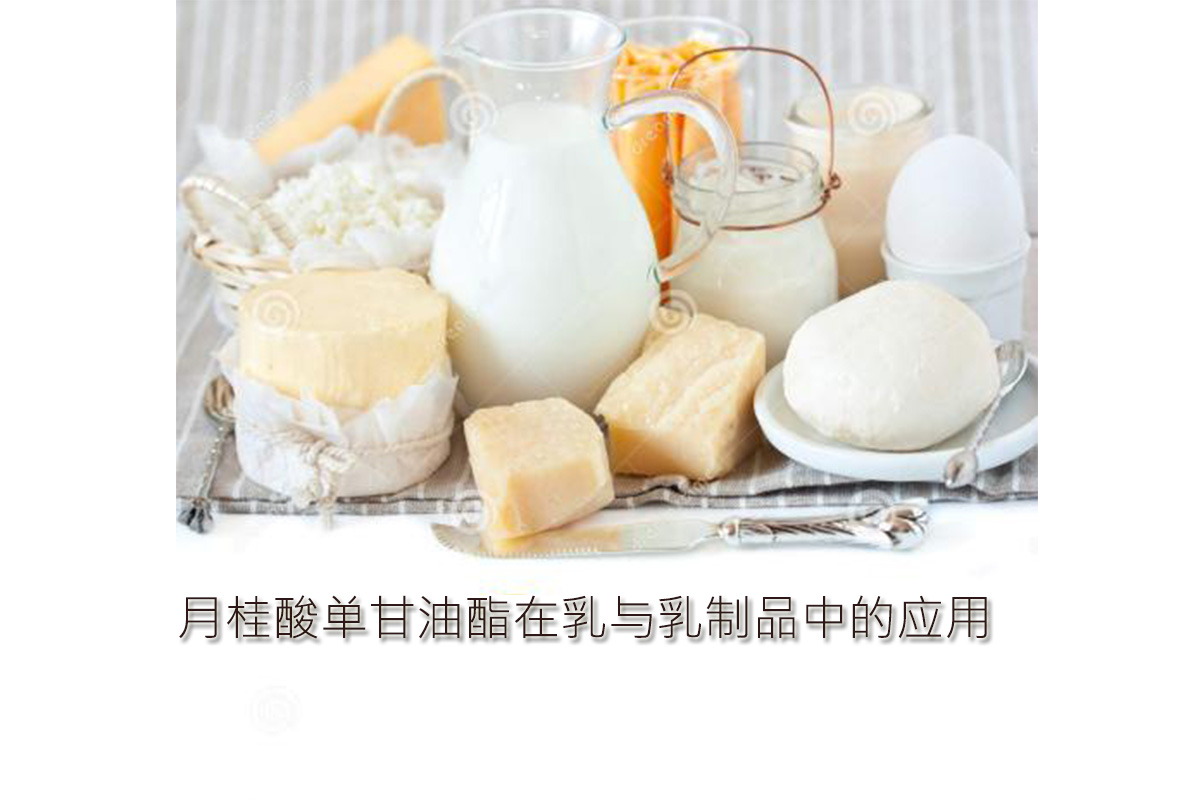
Lauric monoglyceride (Glycerol Monolaurate, referred to as GML), also known as dodecanoic acid monoglyceride, is a lipophilic It is a non-ionic surfactant that naturally exists in breast milk, coconut oil and American palmetto. It can also be obtained by direct esterification of natural lauric acid and glycerol. It is an excellent food emulsifier, and it is also a safe and efficient , broad-spectrum bacteriostatic agent with dual functions of emulsification and bacteriostasis.
The following is an introduction to the application of lauric acid monoglyceride in milk and dairy products:
Milk and dairy products are rich in nutrients and are susceptible to microbial contamination. Among them, spoilage microorganisms mainly include lactic acid-producing bacteria, peptone bacteria, lipolytic bacteria, yeasts and molds. Pathogenic microorganisms mainly include Mycobacterium sclerotiorum and Brucella spp. , Staphylococcus aureus, Salmonella, Bacillus anthracis and Cocosella enterocolitica, etc.
Stecchini et al. mixed GML with lactic acid and used an impregnation method to process Italian cheese. Under vacuum conditions at 5°C, the growth and reproduction of Listeria monocytogenes in the cheese was significantly inhibited and its shelf life was extended to 12d. The combination of GML with nisin and lactoperoxisomes can inhibit Escherichia coli O157:H7 and Staphylococcus aureus. When used in combination with EDTA, it can significantly inhibit the growth and reproduction of spoilage microorganisms in milk. Extend the shelf life and improve the safety of milk.
Blackburn et al. have shown that the combination of GML and Nisin inhibits the growth of S. agalactiae in milk at 37°C. The combination effect is 10 times that of each monomer. At the same time, applying GML to milk can also effectively inhibit the germination of lichen spores. This antibacterial property is different from Nisin, so combining the two can kill and inhibit spores more effectively. However, because GML is easily affected by fat, When added to dairy products, skim or low-fat dairy products should be preferred.


